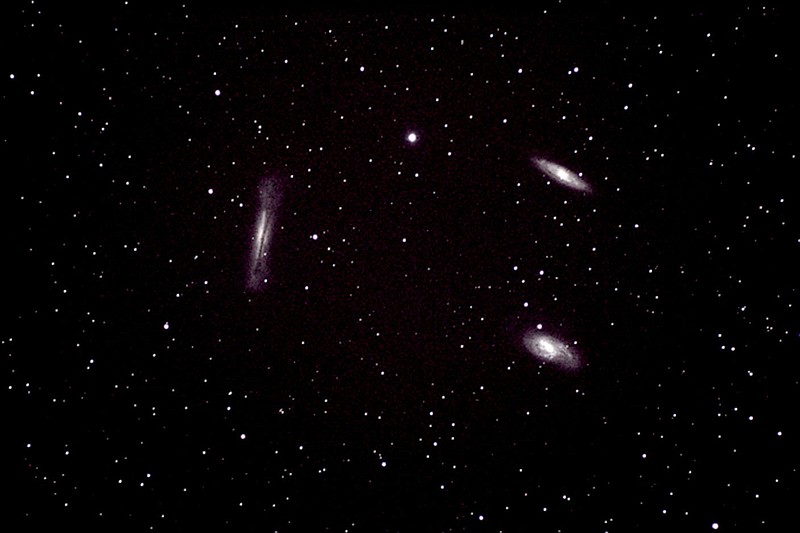It's galaxy season again! As Earth swings around its orbit in the spring, it faces off the plain of the Milky Way and at night it faces a part of the sky that reveals the Realm of the Galaxies. In May and June, several hundred of these galaxies become potentially viewable to amateurs with telescopes of 10-inches aperture or more, viewing from dark skies. Unfortunately, none of these galaxies are visible to the naked eye.
For the casual stargazer, trying to see remote galaxies is underwhelming. The causal stargazer might ask, "Why write about something most of us can't see?" My answer: Amateur astronomy is one of the fastest growing hobbies in the world. One thing this means is that more and more people own, or have access to, larger telescopes than ever before. Many amateurs look forward to this time of the year so they can look for these 'faint fuzzies' -- and they are faint!
Most of the galaxies one can see this time of year are clustered around the constellation Leo the Lion or just east of it, beyond Leo's tail. This is because there is a cluster of galaxies, some 4,500 or more of them, lying in a relativity small part of the sky. This cluster, known as the Coma-Virgo Cluster, lies about 60 million light years away. This enormous distance is why these galaxies are so faint. Some of these galaxies are larger and brighter than our Milky Way galaxy but still hard to see. These galaxies really require 16 inches of aperture to see well, but they are worth hunting for with smaller 'scopes.
I have included an image I made of the so-called Triplet in Leo. (Leo can be found on any Internet sky map during this season and it is fun to trace it out in the night sky, even if one is using just their own eyes.) These three galaxies lie right near where the back leg of Leo would be if this constellation was a true lion. These can be seen on the Internet and, of course, these images will have been made with professional telescopes and will be much better than the ones I offer here. Nevertheless, photographing them is a challenge for amateurs and I offer what I could image with a 5-inch refractor and multiple, stacked time exposures.
Each night I observe these marvels of nature, I think to myself about other life forms that may live on planets spinning around stars in those galaxies. I wonder if they are looking at us. I don't think we will ever know because any sort of signal from them would take millions of years to get here -- and millions of years to answer back! As beautiful as they are, I think they will always remain somewhat mysterious--we humans can't know everything--science teaches humility...
Spring has sprung and it isn't so cold. Get out there and enjoy the marvelous universe!
Dr. David Cater is a former faculty member of JBU. Email him at [email protected]. The opinions expressed are those of the author.

